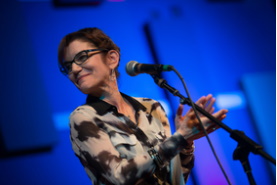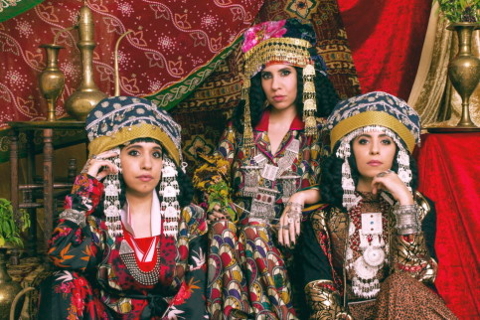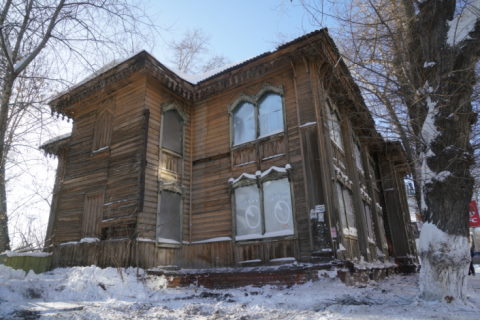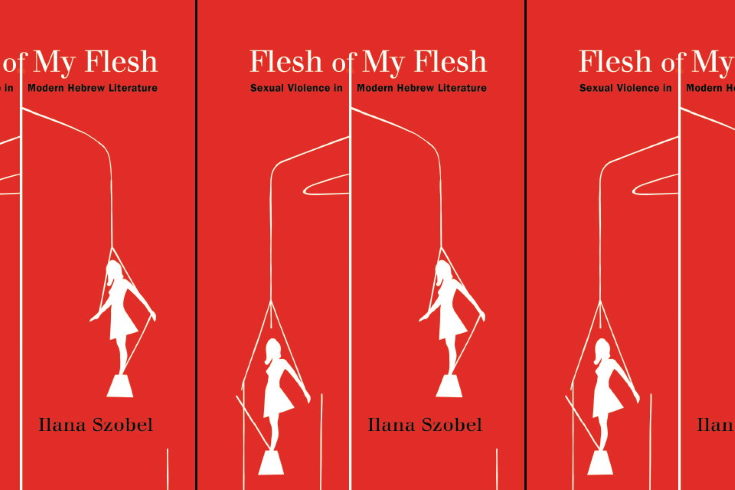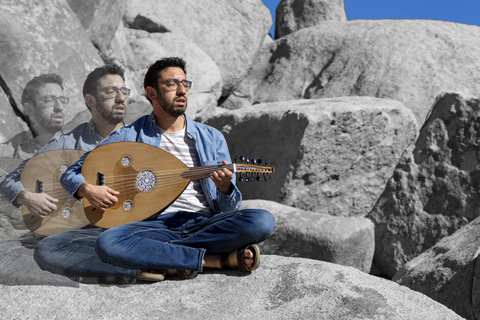Not Your Grandfather's Hora: A New Book on Dance and Judaism
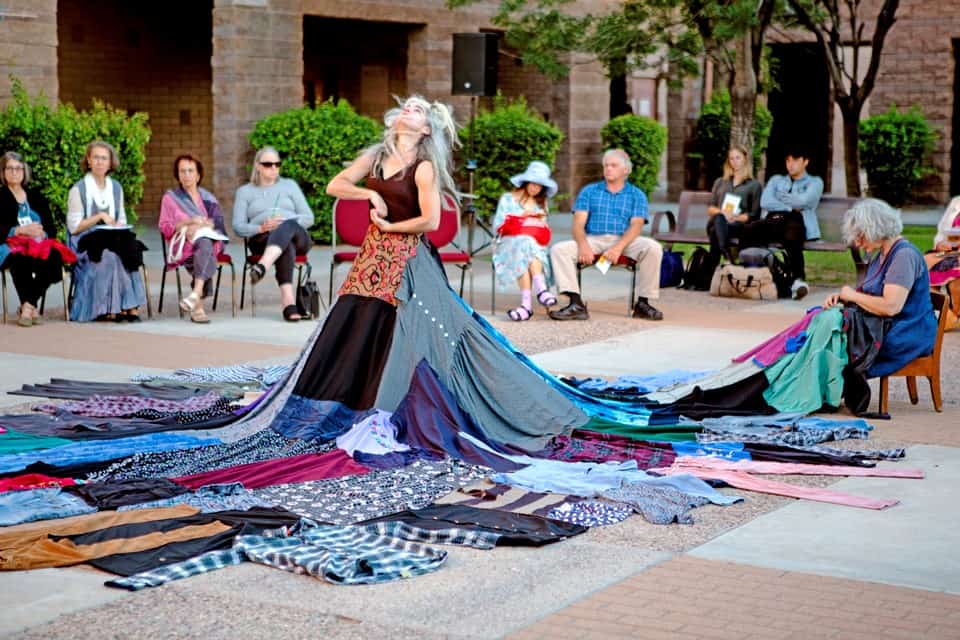
The dancer Suzanne Miller wearing a dress used in her work, Needle and Thread, a commemorative performance based on a list of 600 names of Holocaust victims.
Photo Credit: Mario V. Martinez
June 16, 2022
By Lawrence GoodmanWhat makes a dance Jewish?
To answer this question, you have to identify the similarities between the ecstatic, joyful round dances of the Hasidim and the politically-inspired, modernist choreography of Anna Sokolow; between the West Side Story dances of Jerome Robbins and the postmodern experimentalism of Anna Halprin; between Israeli folk dance and the wild, fluid style of the Israeli choreographer Ohad Naharin.
It can't be done.
That, at least, is the argument made in the newly released book, "The Oxford Handbook of Jewishness and Dance," co-edited by associate professor of creativity, the arts and social transformation Toni Shapiro-Phim; Arizona State University professor Naomi Jackson; and Trinity College assistant professor Rebecca Pappas.
"There is no single set of distinct, trans-historical, universal characteristics that make someone either Jewish or not-Jewish, a dance Jewish or not-Jewish," Jackson writes in the introduction.
Instead, the book explores the diverse expressions of Jewishness in 20th- and 21st-century North American, European and Israeli dance.
The book defines dance broadly, too. In addition to chapters on major and well-known choreographers, the book includes articles on Israeli folk dance classes at the 92nd Street Y in New York, Orthodox Jewish techno trance-dance parties and the Zionist youth dance movement at Israeli kibbutzes.
TJE spoke with Shapiro-Phim, Jackson and Pappas about their book and how it redefines our understanding of Jewishness in relation to dance.
Let's start with the chapter on Hasidic women's dancing.
Jackson: Traditionally, men's dancing took center stage, and even today, it's much easier to go online and find examples of men's Hasidic dancing than women's. But dance ethnographer Jill Gellerman writes about how there's also a strong tradition of women's Hasidic dance.
You can find it in the home, but especially at weddings. And what's really interesting is that the women often draw on popular dances that are in the mainstream, so there's a lot of fusion going on. The dances sometimes include things you would typically see on a disco dance floor or these country line dance patterns.
The men's dancing is much more tied to traditional Eastern European gestures from the 18th- and 19th- centuries. But the women are much more agile and incorporate a lot of popular dance steps.
Can you discuss the legacy of the dancer and choreographer Felix Fibich?
Jackson: In Poland in the 1920s and 1930s, he tried to create a modern Jewish dance style.
He believed that there was such a thing as authentic Jewish movement, so he took these gestures that he'd seen his grandparents doing while they were praying or arguing over the Talmud [rabbinical commentaries from the 1st millennium], and he incorporated them into his modernist works. In that sense, he was very avant-garde, experimenting with this gestural vocabulary in interesting ways. [The chapter on Fibich is by Jackson, Arizona State University's Joel Gereboff and the choreographer Steven Lee Weintraub.]
In Israeli dance, though, there's a break with that Eastern European tradition.
Shapiro-Phim: After the Holocaust, there's this thinking in Israel that they don't want to be seen as victims, so an idea grows regarding a new kind of body to match this new young nation. It's an intentional creation, a rejection of the trope of the seemingly weak, not-physically-confident Eastern European male Jew.
Which led to the creation of Israeli folk dance.
Pappas: Yes, it's really an invented tradition. It draws somewhat from Eastern European folk dances but also from Middle Eastern dance traditions that came with the Yemenite Jews who moved to Israel as well as from Arab cultures.
Tell us about the Israeli folk dance classes at the 92nd Street Y.
Jackson: [Yale University's] Dina Roginsky looks at these two Jewish populations who attend.
First, there are Israelis, who tend to be working-class men. This is a space for them to demonstrate their expertise and have more power than they would otherwise have in the broader U.S. society. So you see them being really flamboyant and singing very loudly while dancing and showing familiarity with the steps.
The other participants are Americans, mostly upper-middle-class women. The classes are a way for them to feel connected to Israel in a beautiful way. They can revel in their love of Israel, and the dances involve a lot of physicality and freedom.
In her chapter on the American choreographer Anna Halprin (who died in May 2021 at age 100), the University of California, Santa Barbara's Ninotchka Bennahum writes that Halprin had "an unwavering belief in the moral capacity of dance to transform human society."
Shapiro-Phim: Halprin believed that everyone has the right to dance and the ability to dance. You don't need to identify yourself as a dancer to move in resonance with your natural surroundings and your neighbors. She focused on facilitating ways for people to become aware of and make those connections. With heightened self-awareness, they could then make constructive choices about how to address life's challenges, including the suffering of others.
And this flowed from her Judaism?
Shapiro-Phim: Her grandparents and parents were Jewish immigrants from what was then Russia. They had experienced antisemitism in their homeland, and it continued as Halprin was growing up in the U.S. This, along with guidance during her college years from [American Conservative ] Rabbi Max Kadushin, contributed to her sensitivity to injustice and her sense of responsibility to counter it.
One of the up-and-coming American choreographers featured in the book is Adam McKinney.
Pappas: Adam is African American, Jewish, gay and also has Indigenous American ancestry. Through dance, he is trying to tell the story of all those heritages and how they overlap in his body.
He has been traveling to sites where his ancestors come from, both Jewish sites and sites in Africa, and dancing at those places, filming himself making pieces that deal specifically with the land from which his ancestors come.His company DNAWORKS just purchased an old Ku Klux Klan hall in Fort Worth, Texas, that had been slated to be torn down. For years, he argued at the city council that we have to save the building and not just erase this history.
He said, this history has to stay, we have to reckon with it, and then it can become something new. His dance company will be based there, and it will be a community arts center. And that's part of Adam's work, the restoration and remaking of these sites of historical trauma.
